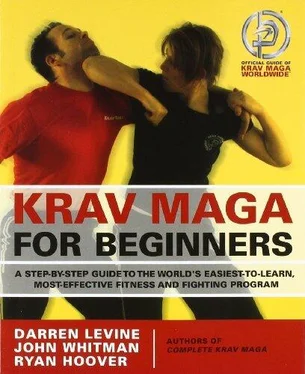This technique does not reverse the attacker, but takes you from being fully mounted to a guard position, which is more advantageous for you. For the sake of clarity, we’ll assume we’re turning to the left first. You can, of course, go to the opposite side first if you prefer.
Starting position:The attacker has you in full mount.
1With the attacker in a full mount, shift onto your left hip and wedge your left elbow between your body and the attacker’s right knee to create space. You can use your right hand to help push the attacker up and away.
2With your left leg extended and flat on the floor and the right foot flat on the floor, push (“shrimp” in grap pling parlance) your hips to the right side. Use your abs to help pull your hips up and out. Your right hand can assist by helping push the attacker’s right knee away.
3There should now be space between the attacker’s right knee and your body. Bending your left knee, slide that leg up and out (it may slide under the attacker’s right leg, which is fine). Keep that left leg flat on the floor as it slides up, or it may bump into the attacker’s leg or body.
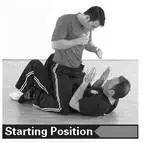

4Once that leg is out, wrap it around the attacker’s leg, then switch to the other hip.
5-6Perform the same movement on that side, and wrap both legs around the attacker. You now have him in your guard. If you have created a great deal of space during this movement, you can simply kick off rather than put him in your guard.

Training Tips:This description says to wedge your left elbow between his knee and your body. You can use your left hand, if you prefer.
Two simultaneous actions create the space: pushing away on the attacker’s knee and pulling your hips up and out. Make sure you do both.
Focus on pushing the attacker’s knee away , not upward. He may be too heavy to lift. However, if the knee lifts up a little, this can help you to slide your leg out.
Defense against Choke while Full Mounted
The attacker, in a full mount, may try to choke you instead of punching. The defense here is a combination of two techniques you already know: first, the plucking defense against a choke while standing; second, the trap and roll principle you’ve already learned.
Starting position:The attacker tries to choke you from a full mount.
1-2With the attacker straddling you and with his hands on your throat, pluck his hands from your throat and trap them to your shoulders. At the same time, bring one foot up to trap one of his legs.
3-4Buck your hips up to throw the attacker up and forward, then tilt him over one shoulder (the same side as the leg you have trapped). Note that your hands, having trapped his hands to your shoulders, should keep him from basing out.
5Roll the attacker over and immediately counterattack with an elbow to the face, or other available strikes. Disengage and get up as soon as possible.
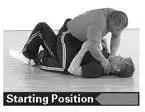
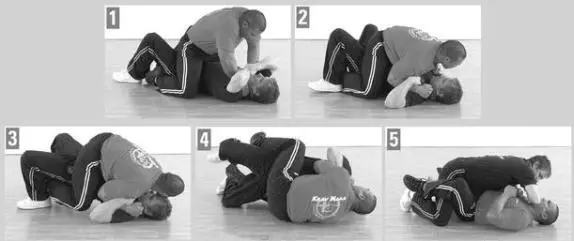
Training Tips:Note that the range of motion of your pluck may be limited by the floor. You should still be able to relieve enough pressure from your throat to allow you to trap and roll.
Defense against Close Choke or Headlock while Full Mounted
The attacker, in a full mount, may try to choke you while bending his arms and leaning in close, or put you in a headlock. Because his body is so close to you, you may not be able to pluck.
Starting position:The attacker puts you in a headlock while in a full mount.
1-3As the attacker comes in close, wrap your arm around one of his arms to trap it into place. If the attack is a headlock, trap the arm that is wrapped around your neck. Trap the leg on the same side as the arm you have trapped, and execute a trap and roll. You’ll most likely end up in the attacker’s guard. If the attack was a headlock, the attacker’s arm may still be wrapped around your neck.
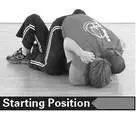
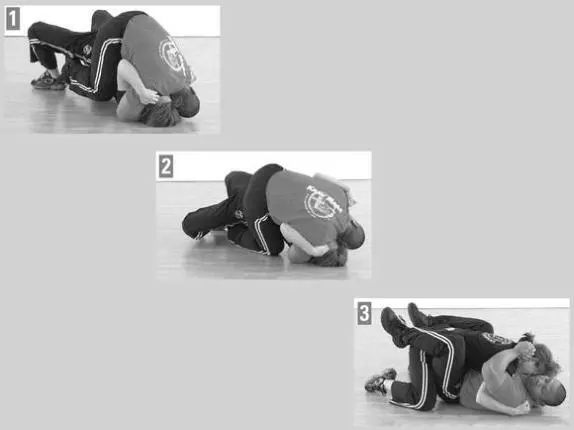
4-6Push the blade of your arm across his face (a “crossface”) to force him to let go, then continue with counterattacks.
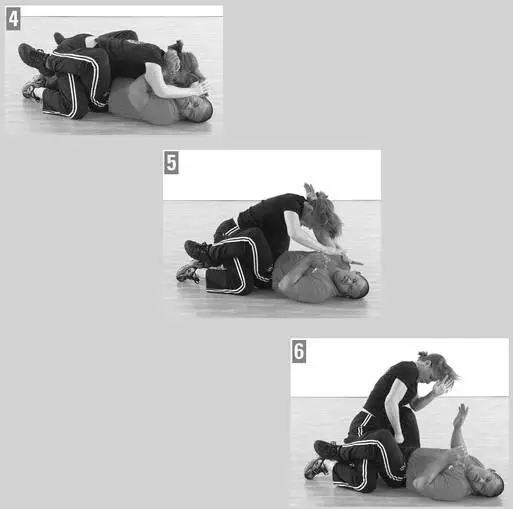
Training Tips:Ultimately, you should try to roll the attacker to the side where you feel most of his weight. However, feeling this does take some time and experience. In general, just remember to trap the arm that is wrapped around your neck if you are in a headlock, and trap the arm on the same side as the attacker’s head if you’re in a close choke.
Getting Up from the Ground
At the end of all groundfighting techniques mentioned here, it’s important to get up as soon as possible. The following is a safe technique for getting up from your back. Note that this technique provides you with both a defensive and offensive tool as you stand up.
1Assume your attacker has backed off, perhaps in response to a kick. Bring yourself up to a modified sitting position, keeping your base foot on the ground, your kicking foot up, and one hand on the same side as the base foot up defensively. Your other hand should be on the ground for support. Your kicking foot should be ready to stomp outward.
2-4Using your base foot and your base hand, lift your hips off the ground. Quickly swing your kicking foot beneath you (think of swinging your hip back at an angle). As you do, place your foot well behind you, not directly beneath you.
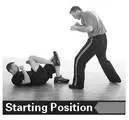
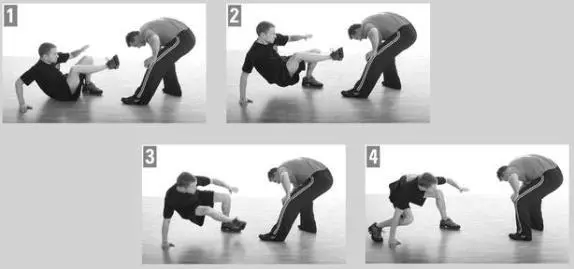
5Stand up, taking a few steps backward to increase the distance.
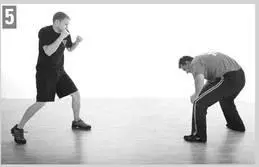
Training Tips:As stated, swing your foot and your hip on a diagonal rather than straight back. This requires less flexibility. If you cannot lift your hips off the ground with just one hand, you can use two. Just be aware that you’re less protected this way.
Be aware that if your opponent is standing too close, he may be able to punch or kick you as you try to rise. In general, make sure there is at least a little distance between you before you try to get up.
Читать дальше
